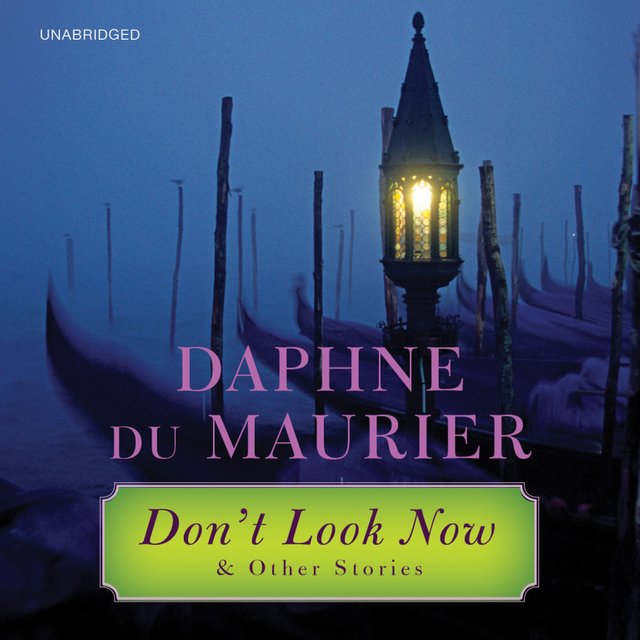Book Review: 'Don’t Look Now: And Other Stories' by Daphne Du Maurier

Don’t Look Now: And Other Stories, by Daphne Du Maurier, Kindle version, 400 pages.
This book consists of five long short stories from the early 70s by 20th Century English writer Daphne Du Maurier. Although she is often classed as a “romantic suspense” genre author, Du Maurier doesn’t fit all that comfortably into that descriptive slot. Her novels and stories usually have long streaks of darkness woven throughout them, which is why Alfred Hitchcock was a fan, and made three films from her books: Rebecca (1940), The Birds (1963), and Jamaica Inn (1939).
The original Du Maurier novella upon which The Birds is based may be one of the most suspenseful stories I’ve ever read, and it’s considerably darker than the celebrated film version (spoiler alert: in the story, the bird-beleaguered farm family doesn’t survive.)
This collection of stories is headlined by Don’t Look Now, the story that forms the basis for Nic Roeg’s famous 1973 supernatural thriller of the same title. Roeg’s film is that rare example of a movie that’s better than the book. The original story of a bereaved couple visiting Vienna after the death of their young daughter is creepy enough, but Roeg pads out the basic bones of the plot magnificently in his film.
Getting back to this book, one thing that makes Du Maurier such a great writer is not only her expert suspense plotting, but the unique characters she brings to life on the page, and the pitiless fates to which she often subjects them. That’s the case with my favorite tale of this collection, Not After Midnight. In this story, a middle-aged British schoolmaster travels to the Greek island of Crete for a holiday of amateur oil painting. At his vacation cottage, he becomes entangled with a sinister and peculiar American couple who are staying in a neighboring cottage. They invite him to drop in anytime, but “not after midnight.” The husband gets the schoolmaster to drink a “sacred brew” from an ancient clay drinking cup--the same sacred brew that was the favored alcoholic drink of the satyrs of Greek mythology. This action changes the schoolmaster’s life in very unexpected ways.
In The Way of the Cross, a group of English pilgrims travel to Jerusalem to visit famous sites associated with the Passion of Christ, led by their village’s vicar. The story focuses on each pilgrim in turn and details how he or she endures a humiliating experience while examining the famous historical sites. For example, an aristocratic lady celebrated for her elegance loses her front dentures, and must finish the trip showing ugly exposed front gums. An elderly spinster falls into a pool of water and nearly drowns in front of a large crowd, after accidentally learning that the vicar she idolizes dreads her visits. A fastidious man suffers an attack of Montezuma’s Revenge in the middle of a large crowd and can’t get to a toilet. The various trials and tribulations of the pilgrims seem pointless until the reader realizes that they are metaphors for the humiliations of Christ on the road to Cavalry—ie, the Way of the Cross.
In Border-Case, a young actress falls in love with a much older man who was once her father’s best friend in the British Army. After tracking him down to a remote island, she finds out that he’s hiding several deadly secrets, one of which is crushing.
In the last story, The Breakthrough, a team of British scientists work on a secret computer project to capture a dying man’s soul at the point of death, with horrifying results.
These stories are all written in Du Maurier’s leisurely, immersive prose, making the reader feel transported to a different world. Highly recommended for those who like to sink their teeth into a good story, with a few satisfying chills thrown in.
Read this book, my mom had it on her bookshelf ( I was lucky to have a Dutch mother who was raised in English speaking countries ). I merely remember Don't Look Now, although I think I had already seen the movie by then ( one of my favorite films from what's probably my fav decade in cinema, the 1970s ).
Reading your description of Not After Midnight, a story I don't remember, I was reminded of a pretty gory (1970s) Greek horror movie that I can't remember the name of. I wonder if it's an adaptation of this tale. Just found it and I don't think it's the same story: https://en.wikipedia.org/wiki/Island_of_Death
Have an awesome weekend and I'll see you around!
Nope, not the same story. SPOILER ALERT, don't read any further if you don't wanna know the ending:
(What happens is that the man of the American couple is actually a satyr, and he gets the schoolmaster to drink the sacred brew and then the schoolmaster becomes a satyr also. The wife of the American man also murders him because he is so disgusting and she's sick of him.)
You have a great weekend also, and I'm glad you are posting again!
I don't mind spoilers :>)
I am, more or less, back but I'm not posting about movies. In all honesty, I don't think I've watched a movie in a month due to the tent life, haha
A hug from Portugal,
Vincent
This post was shared in the Curation Collective Discord community for curators, and upvoted and resteemed by the @c-squared community account after manual review.
@c-squared runs a community witness. Please consider using one of your witness votes on us here